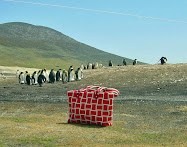The Mummy of Hornedjitef from the Collection of The British Museum
A history, not The history of the World told through 100 man-made objects in the collection of The British Museum. I listened, riveted, to BBC Radio 4's first programme this morning with the Museum's director Neil MacGregor unpicking the idea of telling history through these not necessarily famous objects, but nevertheless ones that can tell a global story connecting all our histories.
By looking at the 3rd Century BC Mummy of Hornedjitef he conjured the idea that we are looking back in time to the sacred paraphernalia for transporting the soul of an Egyptian priest via a hazardous journey into the After Life. Little did he think his mortal remains would end up in Bloomsbury!
As a link into the next object, we heard the ghostly magnetic pulse of a mighty star that our ancestors across large parts of the earth saw explode in broad daylight in 1054. What, briefly, was happening around the world at that moment? It was certainly an ill-fated moment for the English King Harold. William the Conqueror's 1066 invasion hadn't yet been predicted in his own stars.
This is stunning stuff. More than I have been able to mention here, it raises many scholarly questions and attempts to answer them in the most accessible way. I don't think you will be disappointed.
Find the programme blog here. There's also a deeply infuriating interactive website here. Good luck in navigating it. Most importantly, listen to Episode 1 here.






































radio 4 rocks! i listen all the time via the web. it's so great to hear an alternative point of view.
ReplyDeletexoxo
Thanks for the link .. . I'm already enchanted!
ReplyDeleteJjj
Great show. Nothing has altered my view of human history so radically as moving to an old house with a couple of generations of its former inhabitants interred in the yard. Part of the deed specified that we have to maintain the cemetery to specific standards requested by the family of the deceased. There are a dozen or so unmarked graves which might be those of slaves, sharecroppers or people interred from the close of the eighteenth century through the economic calamities of the early nineteenth. The first marked stone, for one Ambrose Jones, is from 1855. He moved here from the same county we did. He was born in 1778, and likely constructed the original one room and loft brick infill frame house. Subsequent inhabitants of the house fought in the Civil War, or weathered the great depression. The two eldest surviving members of the family visited the cemetery once when we first moved out here. They were old enough to have spoken to the Civil War veteran, although they were quick to point out he never discussed it with anybody.
ReplyDeleteSomeone asked me once if I found it "creepy" to have a bunch of dead bodies in the yard. I don't think of it as creepy. It strikes me as more unsettling how quickly a couple of hundred years passes.
I found myself astounded that you had spoken to someone who had in turn spoken to a Civil War veteran. Can someone remind us Limeys when the Civil War took place.
ReplyDeleteThe guy buried in our yard, William H. Wells, served in the 54th North Carolina infantry. He was mustered when he was eighteen, captured at the battle of Fort Stedman at the close of the Petersburg campaign, paroled in 1865, and walked the hundred and fifty miles here from the prison in Richmond. He died in 1928. When she came to visit the cemetery, his grandaughter Lottie was
ReplyDelete90.
Am loving this series...
ReplyDelete